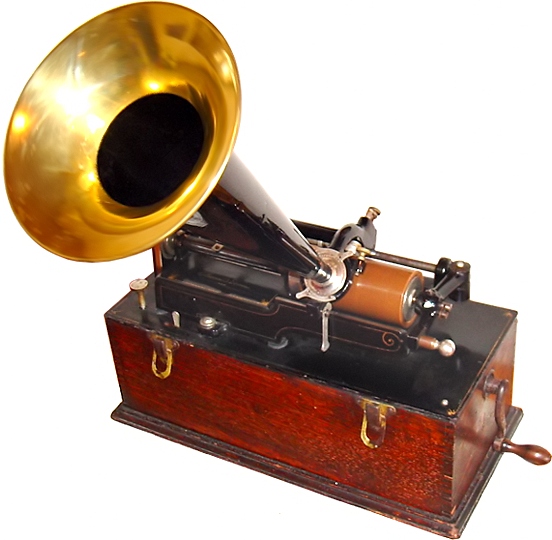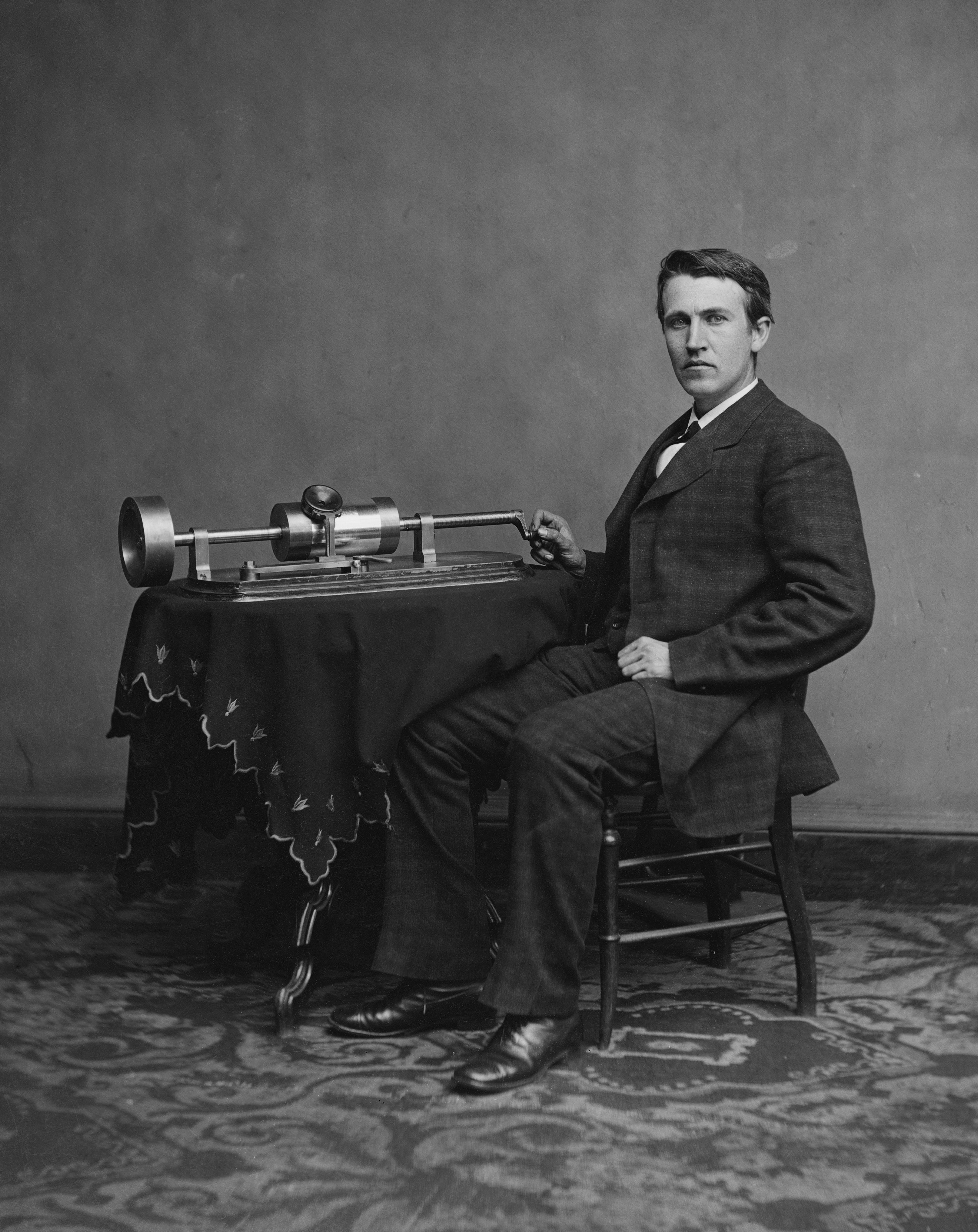Part One: The Acoustic Era
-1877: The Phonograph

Created by Thomas Edison, the Phonograph was the birth
of analog recording. To record with a Phonograph the sound must enter the cone shaped piece of the device called the microphone diaphragm. This piece is connected to a small needle that vibrates with the sounds and notates a pattern onto a tinfoil cylinder. This process is reversed to hear the recording played back, however the quality of the audio was very poor and the device focused on recording speech rather than music. Also, the needle would wear down the cylinder for each playback and the recordings were all one take and impossible to edit.
https://www.youtube.com/watch?v=fnGsHx7QD2o
-1887: The Gramophone
10 years after the phonograph, Emile Berliner invented the Gramophone which was an innovation on its predecessor with a more efficient means of storing its recordings. Berliner created flat circular discs similar to vinyl records that could be pressed in mass production, this was a step up from the Phonograph but the quality was still very poor. This restricted the birth of the recording music industry but it truly was a milestone for recording and while you might not of known what its name is, you know what a gramophone looks like and what it does.
Here is a video of a Gramophone playing a record:
https://www.youtube.com/watch?v=hfmLj_PKkyU
1898: The Telagraphone
Created by Danish inventor the Telagraphone deviated away from the previous recording traditions and introduced electromagnetism into the world of audio recording. It was able to send an electrical signal and then capture it on a medium able to playback the sound. While new methods were invented, new problems arose. The device was heavy and expensive to record with, a minute of recording would cost a dollar (which meant a lot more in 1898). It also still wasn't very clear and not ideal for commercial music recording.
Here is a Telagraphone recording:
https://www.youtube.com/watch?v=pzrB_pwi2TM
1935: The Magnetophon

Invented by Fritz Pfleumer, the magnetophon took the idea of electromagnetic to the next level by using techniques of the telegraphone but using less expensive materials that created a cheaper recording cost and and make the machine more available. It would be the beginning of recording on tapes and would change the industry with multi-tracking. Multi-Tracking is used in every professional studio to ensure the best take is used for the final project. Up until then everyone had one chance to get what they want or they had to start over. The tapes could also hole 10 times as much sound as previous methods which moved the game from singles to albums/ collections of songs. Still, the quality was not where it needed to be, even though this was the best quality heard at the time, the inventors knew that a music industry would not arise from the quality given.
Here is an early recording used with a magnetophon:
https://www.youtube.com/watch?v=OA1oDxRo_lI



No comments:
Post a Comment